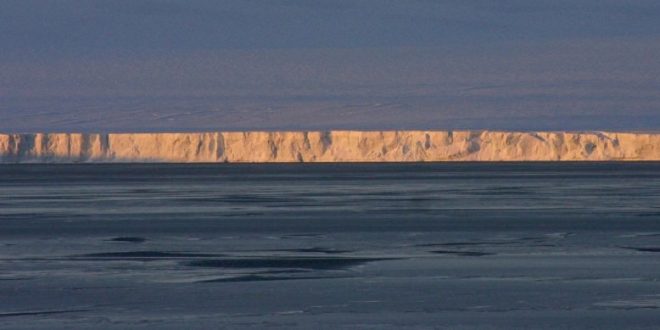New explanation links competing theories of the origin of Antarctic glaciation and highlights complexity of climate change, according to scientists at the McGill University’s Department of Earth and Planetary Sciences.
One of the big mysteries in the scientific world is how the ice sheets of Antarctica formed so rapidly about 34 million years ago, at the boundary between the Eocene and Oligocene epochs.
There are 2 competing theories:
The first explanation is based on global climate change: Scientists have shown that atmospheric carbon dioxide levels declined steadily since the beginning of the Cenozoic Era, 66 million years ago. Once CO2 dropped below a critical threshold, cooler global temperatures allowed the ice sheets of Antarctica to form.
The second theory focuses on dramatic changes in the patterns of ocean circulation. The theory is that when the Drake Passage (which lies between the southern tip of South America and Antarctica) deepened dramatically about 35 million years ago, it triggered a complete reorganization in ocean circulation. The argument is that the increased separation of the Antarctic land mass from South America led to the creation of the powerful Antarctic Circumpolar Current which acted as a kind of water barrier and effectively blocked the warmer, less salty waters from the North Atlantic and Central Pacific from moving southwards towards the Antarctic land mass leading to the isolation of the Antarctic land mass and lowered temperatures which allowed the ice sheets to form.
No one has thought to link these two competing explanations before
A group of researchers, led by scientists in McGill University’s Dept. of Earth and Planetary Sciences now suggest that the best way to understand the creation of this phenomenon is, in fact, by linking the two explanations.
In a paper published on the subject in Nature Geoscience earlier this week they argue that:
- The deepening of the Drake Passage resulted in a change in ocean circulation that resulted in warm waters being directed northwards in circulation patterns like those found in the Gulf Stream that currently warms northwestern Europe.
- That this shift in ocean currents, as the warmer waters were forced northward, lead to an increase in rainfall, which resulted, beginning about 35 million years ago to reduced carbon dioxide levels in the atmosphere. Eventually, as the levels of carbon dioxide in the atmosphere dropped, as a result of a process known as silicate weathering (whereby silica-bearing rocks are slowly worn away by rainfall leading the carbon dioxide from the atmosphere to eventually becomes trapped in limestone) there was such a significant drop in CO2 in the atmosphere that it reached a threshold where ice sheets could form rapidly in Antarctica.
Agencies/Canadajournal
 Canada Journal – News of the World Articles and videos to bring you the biggest Canadian news stories from across the country every day
Canada Journal – News of the World Articles and videos to bring you the biggest Canadian news stories from across the country every day




I just made a theory. The ice sheets formed at the same time as glaciers covered most of the North. Whatever event caused it, either a super volcano blowing ash into the sky blocking out most of the suns rays or an asteroid colliding with earth throwing dust up and blocking out the sun.
My theory also is that since whatever event happened the Earth has been in a period of climate rebound. It has already been proven the earth was warmer before this event then it has been ever since. Gradually warming for the last 35 million years and will continue to get warmer until it gets back to the earths “normal” temperature.